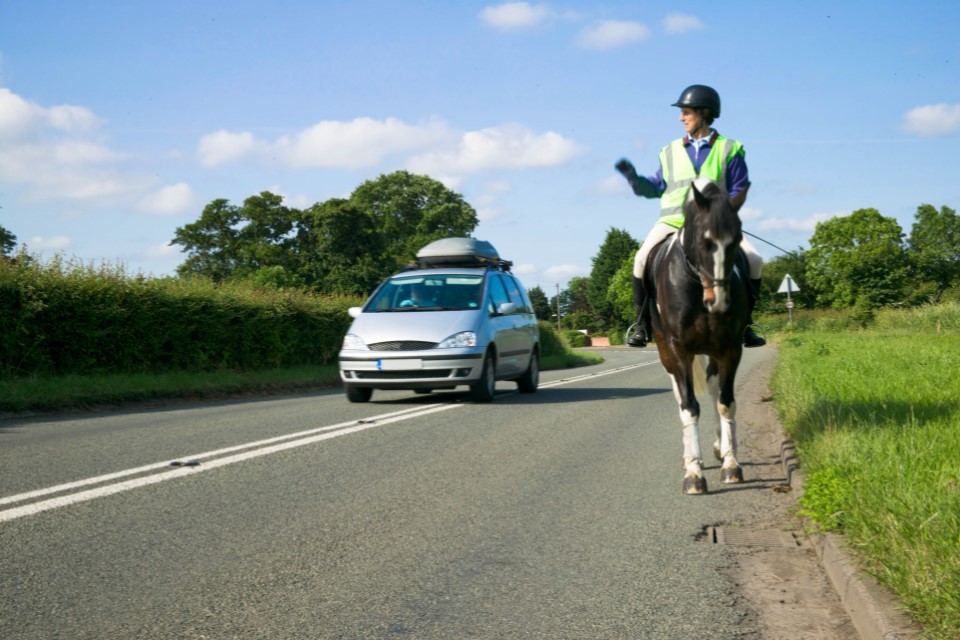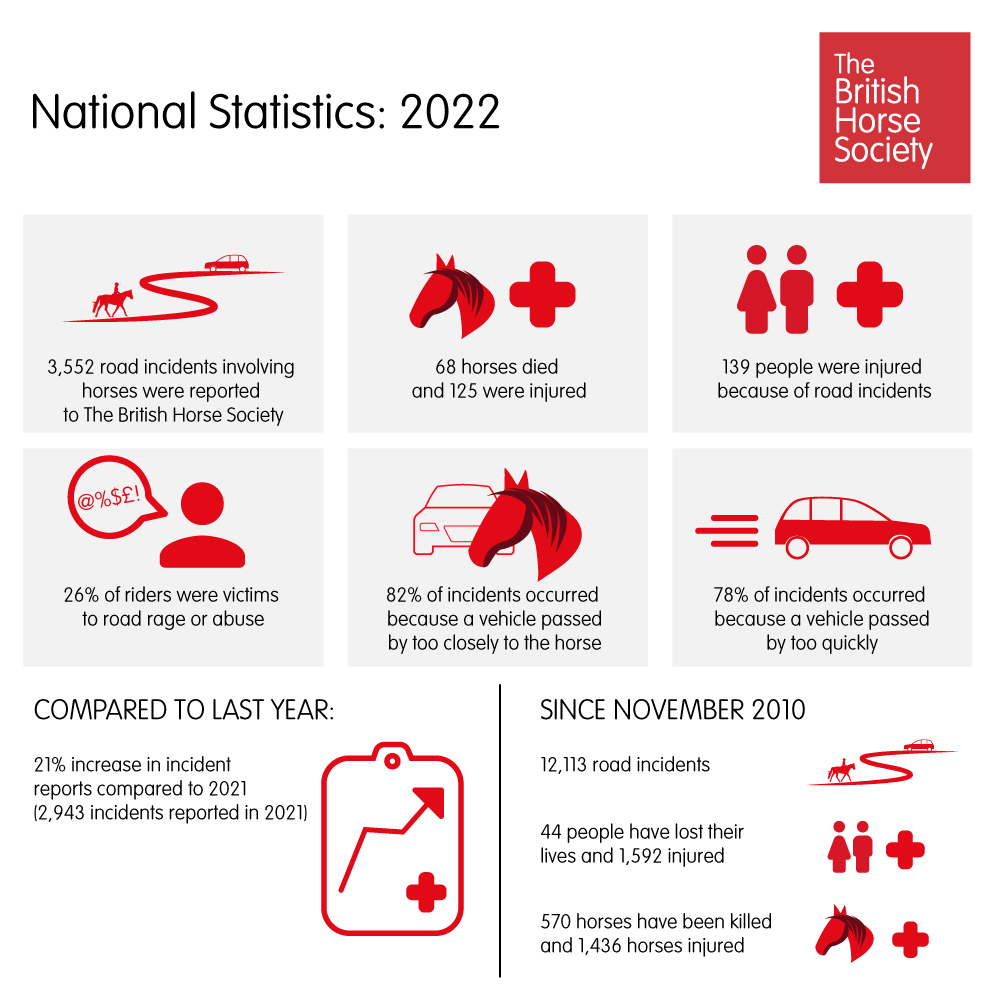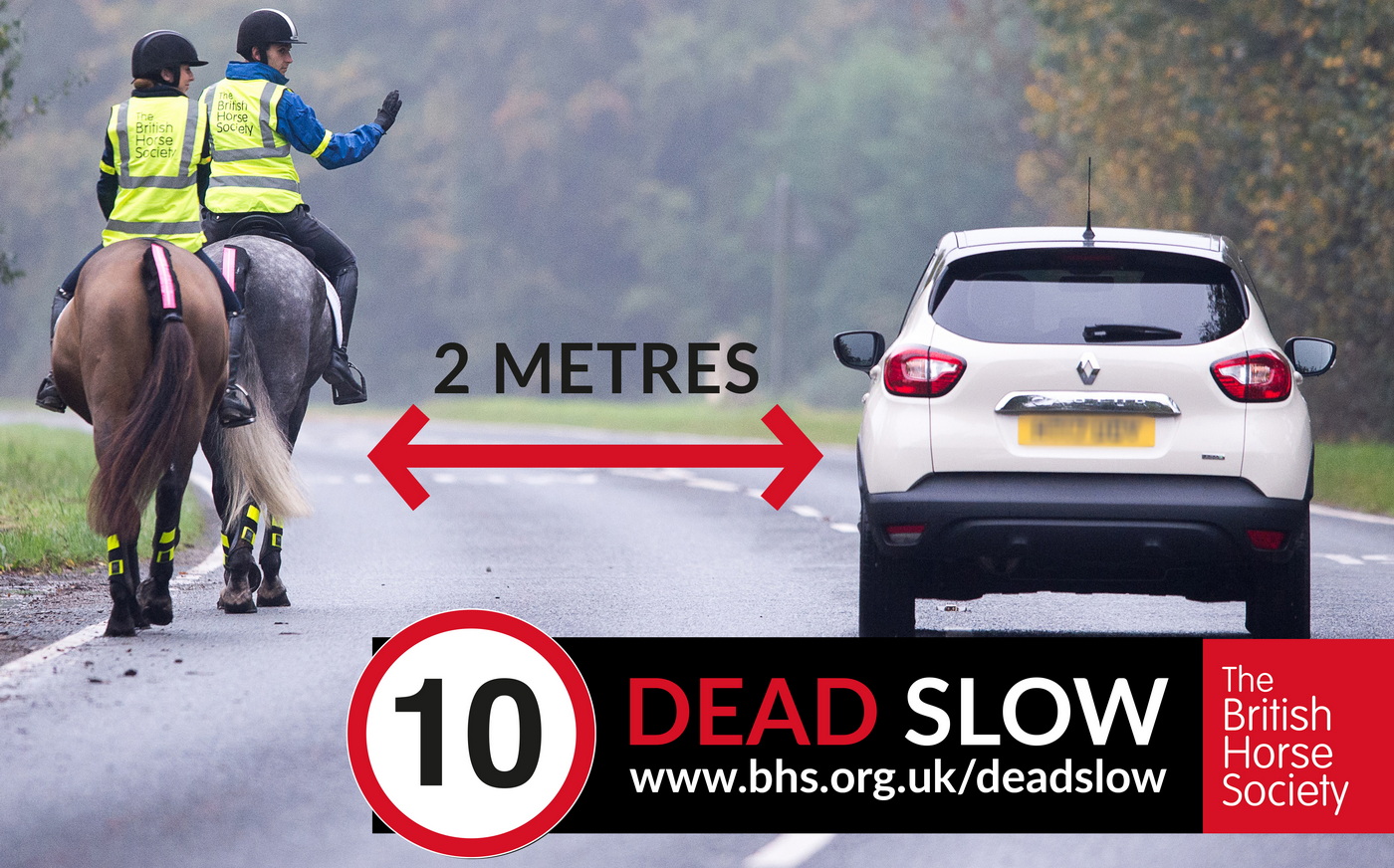Horse road incidents rise by a fifth after Highway Code changes to protect vulnerable
Messaging just isn’t getting through, say riders
Deaths and injuries among horses and riders on British roads are continuing to rise despite changes to the Highway Code introduced last year to make the UK’s roads safer for vulnerable road users, according to Britain’s leading equine charity.
According to the British Horse Society (BHS), two horses have been killed this month in incidents on British roads. It follows a year in which there were 68 equine deaths, 125 injuries and 139 injuries to riders.
In total, the equine charity received details of 3,552 equine related road incidents in 2022, which is a notable 21% increase on the number reported in 2021.
At the end of January 2022 changes to the Highway Code went into effect with a new hierarchy of road users, classifying horse riders among the most vulnerable, alongside pedestrians and cyclists.
The changes gave priority to cyclists and horse riders when vehicles are turning into or out of a junction as well as clarifying guidance on how to pass horses and riders safely.
According to the latest batch of amendments to the Highway Code, motorists should pass horse and horse-drawn vehicles at speeds of no more than 15mph and a distance of no less than two metres.
The guidance also advises that drivers wait behind any motorcyclist, cyclist, horse rider, horse-drawn vehicle or pedestrian and not overtake if it is unsafe or not possible to meet these clearances, but adds drivers may “cross a double-white line if necessary (provided the road is clear) to overtake someone cycling or riding a horse if they are travelling at 10 mph or less (Rule 129).”

A survey by insurer Aviva found that 72% of drivers believe they are not allowed to cross a double white line in order to overtake a horse, with only 20% understanding that it was allowed.
The majority of respondents (22%) also though that drivers need to give five metres of space and drive at a maximum speed of 5mph; only 16% knew the actual speed and gap as per the Highway Code.
Matthew Washer, head of Connected Motor at Aviva, said: “It’s important that people know the rules of the roads. This latest research demonstrates that people aren’t always up to speed with the latest Highway Code changes, so we’d encourage them to review their knowledge on a regular basis, so they know how to stick to the rules when behind the wheel.”
The BHS’s director of safety, Alan Hiscox, told Horse & Hound that he “was dancing a little jig” when the changes were announced.
“People ask whether the DfT [Department for Transport] really listens to equestrians or considers us in the same way as cyclists, and I think this absolutely proves they do. I really think this will be a major step for the safety of horses on the roads.”
One year on, however, Hiscox says that the message about the vulnerability of horses and their riders simply isn’t getting through to all motorists yet, and that a greater effort by the government is needed to communicate the importance of the changes made to the Highway Code.
“Too many drivers underestimate the importance of driving carefully around horses”
“Horses are still being killed and injured on our roads, riders continue to be seriously injured and too many drivers underestimate the importance of driving carefully around horses,” he said.
“This is detrimental to the safety of equestrians. You only have to look at the two horses who were tragically killed in the space of just two weeks at the beginning of 2023.”
Hiscox said the BHS is fearful that guidelines aren’t being clearly explained and delivered, and called for this to change.
“Urgent action is required to make every road user aware of the Highway Code changes and, critically, why it’s so important to pass horses with care. Only through working collaboratively to educate and drive awareness will we be able to stop these awful incidents from happening over and over again.”
According to the BHS’s 2022 statistics, 26% of riders were on the receiving end of road rage or abuse.

Of the incidents in which either riders or horses were killed or injured, 82% occurred because a vehicle passed too close to a horse, with 78% also occurring because a vehicle passed by too quickly.
Hiscox’s view was echoed by the Paralympian and BHS ambassador Natasha Baker, who said that she often feels unsafe when riding on the road.
“Hacking [riding a horse for pleasure or exercise] is a big part of my training, helping to build my horse’s fitness levels, but heading out on the roads can feel like you’re taking your life into your own hands,” she said.
“I’m so sad to see that this continues to remain the case, and it looks to be even worse a year after the changes to the Highway Code were introduced.
“Riding helps people from all backgrounds and walks of life, particularly when it comes to relieving stressful situations, and more needs to be done to make sure that every rider feels safe.”
Since November 2010, there have been 12,113 road incidents involving horses, with 44 people killed and 1,592 injured.
In that same period, 570 horses have been killed, with 1,436 reported injured.
Related articles
- After reading about the increase in horse deaths on the road, you might be interested in hearing about the revised laws around mobile use at the wheel
- Did you read the AA’s reactions to the government proposal for two-year MOTs?
- You might also like to read about how to claim for pothole damage to your car’s suspension, wheels and tyres
Latest articles
- F1 2025 calendar and race reports: The new Formula One season as it happens
- Seven great automotive events to visit this summer, from F1 to art and champagne
- Watch new Porsche 911 GT3 smash Nürburgring record for manual cars
- Skoda Elroq 2025 review: Czech carmaker can’t seem to miss with its electric family cars
- Five best electric cars to buy in 2025
- Should I buy a diesel car in 2025?
- Zeekr 7X AWD 2025 review: A fast, spacious and high tech premium SUV — but someone call the chassis chief
- Denza Z9GT 2025 review: Flawed but sleek 1,062bhp shooting brake from BYD’s luxury arm
- Extended test: 2024 Renault Scenic E-Tech review














